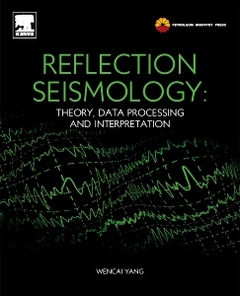Description
Reflection Seismology
Theory, Data Processing and Interpretation
Author: Wencai Yang
Language: English
Subject for Reflection Seismology:
Keywords
Cauchy boundary value; Continuum mechanics; Data processing; Diffractor; Downgoing; Dynamics; Earth; Elastic solid; Elastic waves; Fourier transform; Homogeneous acoustic wave equation; Integral solution; Inverse problems; Mechanics; Seismic data; Seismic inversion; Seismic wave field; Seismic wave propagation; Seismic waves; Upgoing; Vertical seismic profile; Wave equation; Wave equations; Wave field; Wave motion; Wave theory
272 p. · 15x22.8 cm · Hardback
Description
/li>Contents
/li>Readership
/li>Comment
/li>
Authored by a geophysicist with more than 50 years of experience in research and instruction, Reflection Seismology: Theory, Data Processing and Interpretation provides a single source of foundational knowledge in reflection seismology principles and theory.Reflection seismology has a broad range of applications and is used primarily by the oil and gas industry to provide high-resolution maps and build a coherent geological story from maps of processed seismic reflections. Combined with seismic attribute analysis and other exploration geophysics tools, it aids geologists and geo-engineers in creating geological models of areas of exploration and extraction interest. Yet as important as reflection seismology is to the hydrocarbon industry, it?s difficult to find a single source that synthesizes the topic without having to wade through numerous journal articles from a range of different publishers. This book is a one-stop source of reflection seismology theory, helping scientists navigates through the wealth of new data processing techniques that have emerged in recent years.
The secondary audience includes instructors and graduate students taking related coursework in geophysics.
- Provides geoscientists and geo-engineers with a theoretical framework for navigating the rapid emergence of new data processing techniques
- Presents a single source of reflection seismology content instead of a scattering of disparate journal articles
- Features more than 100 figures, illustrations, and working examples to aid the reader in retaining key concepts
- Arms geophysicists and geo-engineers with a solid foundation in seismic wave equation analysis and interpretation




